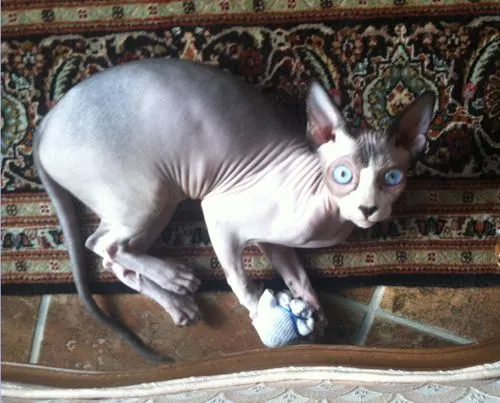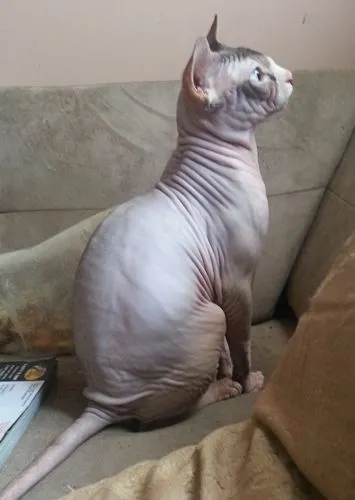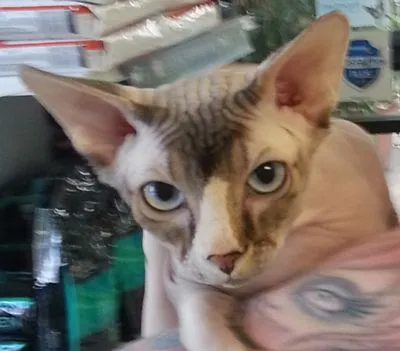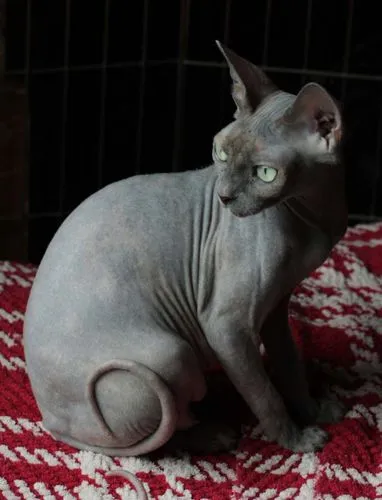Sphynx cats captivate owners with their unique hairless appearance and fascinating color genetics. If you’re wondering about Sphynx point vs mink, these “thermal” patterns develop as kittens grow, with color intensifying on cooler body parts like ears, tail, and paws. Both patterns stem from Siamese-like genes, but they differ in eye color, contrast, and inheritance. Understanding these helps identify your Sphynx’s true coloration, especially for breeders or new owners exploring domestic cat breeds.
Whether you’re a first-time Sphynx parent or a genetics enthusiast, grasping these distinctions ensures better breeding decisions and health monitoring. Sphynx colors aren’t static at birth—pale kittens darken over months, influenced by temperature-sensitive enzymes.
What Are Pointed Sphynx Cats?
Pointed Sphynx carry the classic Siamese point gene, recessive and temperature-sensitive. Born cream or white, their darker points emerge on extremities as they mature. These cats always have striking blue eyes, a hallmark of the colorpoint pattern.
The contrast between the pale body and deep points is pronounced—think seal brown points on a creamy body. This gene restricts pigment production to cooler areas, similar to Siamese or Balinese cats. According to feline genetics experts, like those from the Cat Fanciers’ Association (CFA), pointed Sphynx thrive indoors to maintain pattern vibrancy.
Here’s a stunning adult Seal Point Sphynx with white markings:
 Adult Seal Point Sphynx cat showing pronounced dark points on ears, tail, and paws against a pale body
Adult Seal Point Sphynx cat showing pronounced dark points on ears, tail, and paws against a pale body
And the same kitten, still developing its points:
 Kitten version of the Seal Point Sphynx, pale with emerging darker extremities
Kitten version of the Seal Point Sphynx, pale with emerging darker extremities
Pointed Sphynx often show even more dramatic shading in cooler climates. Owners report that bathing or stress can temporarily lighten points, but they rebound.
What Are Mink Sphynx Cats?
Mink Sphynx result from a blend of Siamese (blue-eye) and Burmese (amber-eye) genes, creating a balanced, velvety tone. Also “thermal,” they start pale but develop aqua or green-aqua eyes—not pure blue. The body and points blend more seamlessly, with less stark contrast than points.
Seal Mink, sometimes called Natural Mink, features warm brown tones throughout. This pattern mirrors Tonkinese cats, offering sepia-like shading ideal for pet homes seeking subtle elegance. Genetic testing confirms the dual-gene combo, as noted in resources from the International Cat Association (TICA).
Observe this Seal Mink Sphynx adult:
 Adult Seal Mink Sphynx displaying blended brown tones with white accents and aqua eyes
Adult Seal Mink Sphynx displaying blended brown tones with white accents and aqua eyes
A closer view highlights the mink uniformity:
 Close-up of Seal Mink Sphynx showing even color distribution across body and points
Close-up of Seal Mink Sphynx showing even color distribution across body and points
Mink Sphynx are prized for their “champagne” glow, especially in show lines. For variety, check out patterned breeds like the tuxedo ragdoll cat.
Key Differences: Sphynx Point vs Mink at a Glance
| Feature | Pointed Sphynx | Mink Sphynx |
|---|---|---|
| Eyes | Blue | Aqua/green-aqua |
| Contrast | High (pale body, dark points) | Low (blended body/points) |
| Genetics | Single Siamese gene | Siamese + Burmese genes |
| Development | Extreme points | Even toning |
These traits aid quick identification. Points suit dramatic looks, while minks offer subtlety. Both require UV protection due to skin sensitivity—consult vets for sunscreen tips.
Is Your Sphynx Cat Blue? Identification Tips
“Blue” Sphynx aren’t truly blue but diluted blacks, carrying the dilute gene (d/d). Solid blacks appear charcoal-gray, but blues show steely blue nose leather and paw pads—not black. Eyes are typically mint green, unless pointed or mink.
Distinguishing takes practice; Sphynx blacks often look ashy. Blue variants include Blue Tortie (dilute black/orange mix). Paw pads are the giveaway—blue-gray vs. black.
This darker Blue Cream exemplifies dilution:
 Blue Cream Sphynx cat illustrating dilute tortie pattern with steely blue paw pads and mint eyes
Blue Cream Sphynx cat illustrating dilute tortie pattern with steely blue paw pads and mint eyes
Test via genetics (e.g., UC Davis lab) for breeding accuracy. Blues pair well with outdoor cat breeds in mixed homes, though Sphynx prefer indoors.
For massive felines, see the biggest domestic cat breed.
Conclusion: Mastering Sphynx Genetics
Mastering Sphynx point vs mink unlocks your cat’s heritage—points for contrast, minks for harmony, and blues for dilution depth. Always prioritize health: regular vet checks catch issues like HCM common in Sphynx. Share photos in communities for crowd-sourced insights.
Ready to explore more? Dive into brown ragdoll cat patterns or consult a feline geneticist. Your Sphynx’s unique look starts with knowledge!
References:
- Cat Fanciers’ Association (CFA): Sphynx Standards
- International Cat Association (TICA): Color Genetics
- UC Davis Veterinary Genetics Lab: Feline DNA Testing
